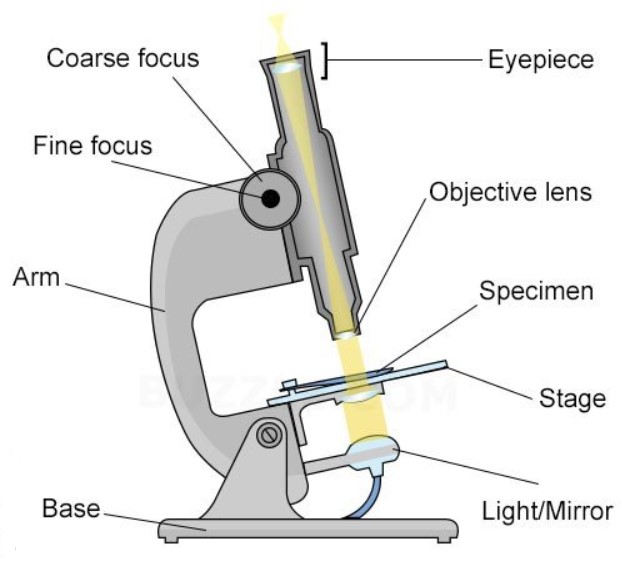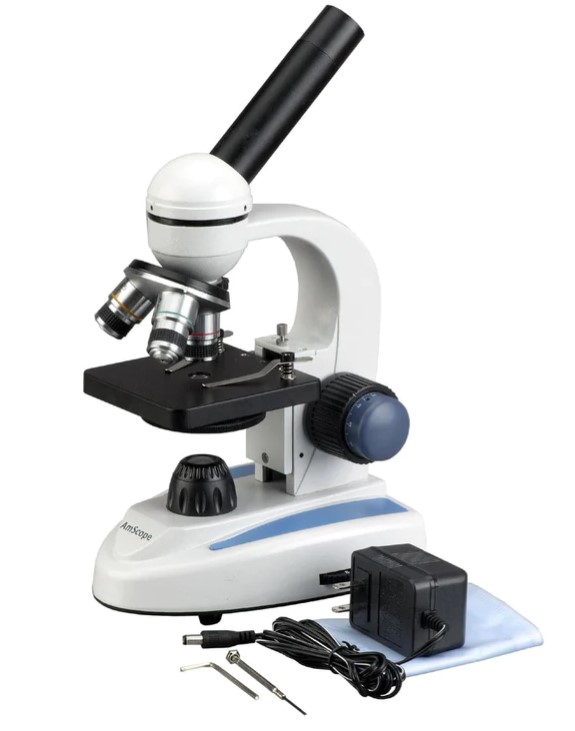Have you ever looked at a leaf and wondered about the tiny veins running through it? What about a drop of water and thought, “What tiny micro-organisms could be hiding in there?” To answer these questions about a world invisible to the naked eye, look no further than microscopes!

Looking into the miniature universe is a great way to get your young scientist interested in STEM. Kids have curious minds, with the help of a microscope, you can transform your crotch goblins from mayhem makers to scientific explorers, unlocking the secrets hidden in the microscopic realm.
Why Use a Microscope? What You Can see Beyond the Naked Eye
The human eye is pretty incredible, but it has limitations. It can only see objects as small as around 0.1 millimeters (about the width of a thin hair), but not much smaller. This is where the microscope comes in. Microscopes can magnify objects hundreds or even thousands of times their original size. Even with a basic beginner microscope off amazon you can see:
- Cells: The building blocks of life, invisible to the naked eye. Studying cells tells us about how organisms function and helps us understand diseases.
- Microorganisms: Tiny living things like bacteria, algae, and protozoans, essential for life on Earth.

- Crystals and minerals: Different materials can form beautiful and crystalline structures.
- Tissues and organs: Examine the intricate details of plant and animal tissues to understand their functions.
How Does a Microscope Work?
Microscopes can vary dramatically, making it hard to know which are best, but they all share the same basic principle: using lenses to magnify objects. A typical light microscope has two sets of lenses:

- Objective lens: This lens sits closest to the observed object and provides the initial magnification.
- Eyepiece lens: This lens is the one you look through. Its job is to further magnify the image formed by the objective lens.
The magnification of a microscope is calculated by multiplying the magnification of the objective lens by the magnification of the eyepiece lens. For example, a microscope with a 10x objective and a 10x eyepiece will magnify an object 100 times its original size.
What You Need to Start Exploring
Getting started is easier than you might think! The basics are:
- Microscope: You can find microscopes suitable for the younger scientists at various price points. We will delve into specific recommendations at the end.
- Slides: These are thin pieces of glass where you place the object you want to observe. You can buy prepared slides with interesting specimens, or you can prepare your own slides with things you find around the house like onion skin or human cells.
- Coverslips: These are thin sheets of glass placed over the specimen on the slide to hold it in place and keep the image clear.
What to Observe in the Mini Universe
The world under the microscope is full of surprises. Here are some exciting options to start your adventure with:

- A drop of pond water: Seemingly ordinary water holds a hidden universe of microscopic organisms like paramecium, rotifers, and algae. Observe how they move and the funky shapes.
- Onion skin: Peel off a thin layer of onion skin and place it on a slide. You’ll see the individual cells arranged in a grid-like pattern. These cells are the building blocks of plant tissue.
- Salt crystals: Dissolve a pinch of salt in a drop of water on a slide and let it dry. Observe the beautiful geometric shapes of the salt crystals under the microscope.
- Your own cheek cells: Gently scrape the inside of your cheek with a cotton swab and smear it on a slide. Stain it with a drop of methylene blue (available at many big chain stores) and observe the fascinating shapes and structures of your own cells.
Recommendations for Microscopes:
Here are the top microscopes for their respective price points. Use the affiliate links to keep sights like these running and giving you information to encourage your young scientist!


